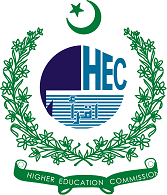Revisiting Pakistan's Energy Crisis and CPEC Power Projects
Prospects, Challenges, and Remedies for Energy, Environmental, and Debt Sustainability
DOI:
https://doi.org/10.58932/MULA0009Abstract
Pakistan, a country severely affected by energy crisis, is fulfilling its energy demands by a combination of fossil fuels (coal, oil, and gas), renewables, and nuclear energy. Fossil fuels such as coal, oil, and gas account for nearly one-third of energy imports are major source of Pakistan’s primary energy mix. Almost 75% of energy production through CPEC power plants is through coal. Environmental and debt sustainability, two vital concerns highlighted by critics about CPEC power plants, are the major focus of this study. Considering the gap between demand and supply and environmental impacts caused by over-emphasis on fossil fuels to generate electricity, this study is structured to explore the impacts of CPEC power plants on environmental and debt sustainability in Pakistan. It further aims at exploring the factors behind new generated capacity through CPEC power projects. Exploring energy security of Pakistan, this paper utilizes 4As framework as a methodology to measure the transformations in Pakistan’s energy security by mapping it onto four aspects: availability, applicability, acceptability, and affordability. Two key aspects of energy security, availability and affordability of energy, are heavily emphasized in this study. Despite substantial flows into the energy infrastructure through CPEC, Pakistan still continues to be energy insecure facing additional challenges in the shape of environmental and debt sustainability. The study recommends gradual but consistent adoption of green energy solutions and enhanced conservation efforts for mitigating energy, environmental, and debt insecurities.
Keywords: Energy security, environmental and debt sustainability, green energy, 4As framework, CPEC power projects etc.
References
Abbasi, S. A. (2020). Is Coal Power Generation a Sustainable Solution for Energy Needs of Pakistan: A Delphi-SWOT Paradigm? International Journal of Energy Economics, 11(1), 308–317. https://doi.org/10.32479/ijeep.10598
Abdullah, F.B.; Iqbal, R. ., Ahmad, S.; El-Affendi, M. A. ., & Abdullah, M. (2022). An Empirical Analysis of Sustainable Energy Security for Energy Policy Recommendations. Sustainability, 14, 6099.
Aftab Ahmad Khan Sherpao. (2021). Hydel Potential In Pakistan. https://nepra.org.pk/Policies/Hydel Potential in Pakistan.pdf
Aftab, S. (2014). Pakistan’s Energy Crisis: Causes, Consequences and Possible Remedies. The Norwegian Peacebuilding Resource Centre. https://www.files.ethz.ch/isn/177484/ade59fba5daf67a11a1c217434abf440.pdf
Amjad, R.; Burki, S. J. (Eds. . (2015). Pakistan: Moving the Economy Forward. Cambridge University Press.
Asim, Muhammad, Adnan Qamar, Ammara Kanwal, Ghulam Moeen Uddin, Muhammad Mujtaba Abbas, Muhammad Farooq, M. A. Kalam, Mohamed Mousa, and K. S. (2022). Opportunities and Challenges for Renewable Energy Utilization in Pakistan. Sustainability, 14(17), 10947. https://doi.org/10.3390/su141710947
Asma Khalid. (2020, February 12). China-Pakistan Nuclear Energy Cooperation: History and Key Debates. South Asian Voices.
Bazilian, M.; Nakhooda, S.; Van de Graaf, T. (2014). Energy governance and poverty. Energy Res. Soc. Sci., 01, 217–225.
Belt and Road: Coal Power Exports to Remain Key Focus. (2018, July 31). Fitch Solutions. https://www.fitchsolutions.com/power/belt-and-road-coal-power-exports-remain-key-focus-31-07-2018
Boardman, B. (1991). Fuel Poverty: From Cold Homes to Affordable Warmth. Belhaven Press.
Bollino, C.A.; Botti, F. (2017). Energy poverty in Europe: A multidimensional approach. PSL Q. Rev., 70, 473–507.
Bradley, R. (2009). Comment—Defining health insurance affordability: Unobserved heterogeneity matters. J. Health Econ., 28, 255–264.
Dawn. (2012, October 1). Conversion to Coal-Fired Power Generation. https://www.dawn.com/news/753267/conversion-to-coal-fired-power-generation
Day, R.; Walker, G.; Simcock, N. (n.d.). Conceptualising energy use and energy poverty using a capabilities framework. Energy Policy, 2016(93), 255–264.
Department of Energy & Climate Change. In Annual Report on Fuel Poverty Statistics 2011. (2011). https://assets.publishing.service.gov.uk/government/uploads/system/uploads/attachment_data/%0Afile/48138/2181-annual-report-fuel-poverty-stats-2011.pdf
Erica Downs. (2019). THE CHINA-PAKISTAN ECONOMIC CORRIDOR POWER PROJECTS: INSIGHTS INTO ENVIRONMENTAL AND DEBT SUSTAINABILITY.
Foster, V.; Tre, J.-P.; Wodon, Q. (2000). Energy prices, energy efficiency, and fuel poverty. In Latin America and Caribbean Regional Studies Programme. World Bank.
González-Eguino, M. (2015). Energy poverty: An overview. Renew. Sustain. Energy Rev, 47, 377–385.
Jack Unwin. (2019, September 27). What does Pakistan’s energy mix look like and what is its future? Power Technology. https://www.power-technology.com/analysis/pakistan-energy-mix/
Karekezi, S.; McDade, S.; Boardman, B.; Kimani, J.; Lustig, N. (2012). Energy, poverty, and development. In Global Energy Assessment Writing Team, Global Energy Assessment: Towards a Sustainable Future (pp. 151–190). Cambridge University Press.
Ketting, N. G. (1995). Towards a sustainable energy future. Energy Policy, 23, 637–638.
Khalid, I.; Mukhtar, A. (2016). Energy crisis: An issue of good governance, a way forward. J. Political Stud., 23, 101–116. http://pu.edu.pk/images/journal/pols/pdf-files/7-IRAM-ASIA_v23_1_16.pdf
Khan, Z., Changgang, G., & Afzaal, M. (2020). China-Pakistan economic corridor at the cross intersection of China, Central Asia and South Asia: Opportunities for regional economic growth. Chinese Economy, 53(2), 200–215. https://doi.org/10 .1080/10971475.2019.1688005
Knotek, E.S., I. (2007). How useful is Okun’s law? Econ. Rev.-Fed. Reserve Bank Kans. City, 92, 73–103.
Lagarde, C. (2019). BRI 2.0: Stronger Frameworks in the New Phase of Belt and Road. https://www.imf.org/en/News/Articles/2019/04/25/sp042619-stronger-frameworks-in-the-new-phase-of-belt-and-road
Latief, R.; Kong, Y.; Peng, Y.; Javeed, S. A. (2020). Conceptualizing pathways of sustainable development in the union for the mediterranean countries with an empirical intersection of energy consumption and economic growth_. Int. J. Environ. Res. Public Health, 17, 5614.
Ma Jun & Simon Zadek. (2019). Low-Carbon Belt and Road. Project Syndicate. https://www.project-syndicate.org/commentary/climate-change-belt-and-road-infrastructure-investment-by-ma-jun-and-simon-zadek-2019-03.
Mahmood, R.; Shah, A. (2017). Deprivation counts: An assessment of energy poverty in Pakistan. Lahore J. Econ., 22, 109–132.
Malik, S., M. Qasim, H. Saeed, Y. Chang, and F. T.-H. (2019). Energy Security in Pakistan: A Quantitative Approach to a Sustainable Energy Policy (No. 1024). https://www.adb.org/publications/energy-security-pakistan-sustainable-energy-policy
Narumon INTHARAK. (2007). A QUEST FOR ENERGY SECURITY IN THE 21 S T CENTURY.
NEPRA. (2002). Policy For Power Generation Projects Year 2002. https://nepra.org.pk/Policies/Power Policy 2002.pdf
NEPRA. (2017). No Title. https://www.nepra.org.pk/
Nussbaumer, P.; Bazilian, M.; Modi, V. (2012). Measuring energy poverty: Focusing on what matters. Renew. Sustain. Energy Rev., 16, 231–243.
Pachauri, S.; Spreng, D. (2011). Measuring and monitoring energy poverty. Energy Policy, 39, 7497–7504.
Papageorgiou, C.; Saam, M.; Schulte, P. (2017). Substitution between clean and dirty energy inputs: A macroeconomic perspective. Rev. Econ. Stat., 99, 281–290.
Private Power & Infrastructure Board (PPIB). (2014). National Power Policy 2013. https://www.google.com/search?q=Government+of+Pakistan%2C+National+Power+Policy+2013%2C+13%2C&sca_esv=559959589&rlz=1C1CHBD_enPK946PK946&ei=cr7oZLnROtaDxc8PpbeB8Ac&ved=0ahUKEwi50paghviAAxXWQfEDHaVbAH4Q4dUDCBA&uact=5&oq=Government+of+Pakistan%2C+National+P
Qurat-ul-Ann, A.-R.; Mirza, F. M. (2021). Multidimensional energy poverty in Pakistan: Empirical evidence from household level micro data. Soc. Indic. Res., 155, 211–258.
Ramay, S.A. (2021). China’s Debt Relief Diplomacy and the Western Conspiracy Theories. China Today. https://www.google.com/searchq=China’s+Debt+Relief+Diplomacy+and+the+Western+Conspiracy+Theories&sca_esv=559959589&rlz=1C1CHBD_enPK946PK946&ei=i7XoZNvpPN7c4-EP5-S_8&ved=0ahUKEwib273h_feAAxVe7jgGHWfyD_8Q4dUDCBA&oq=China’s+Debt+Relief+Diplomacy+and+the+W
Ramay, Shakeel Ahmad. (2021, August 9). China’s Debt Relief Diplomacy and the Western Conspiracy Theories. China Focus.
Rehman, A.; Cismas, L. M. ., & Otil, M. . (2022). Electrical Energy Dilemma and CO2 Emission in Pakistan: Decomposing the Positive and Negative Shocks by Using an Asymmetric Technique. Sustainability, 14, 8957. https://doi.org/%0A10.3390/su14148957
Rehman, A. (2019). The nexus of electricity access, population growth, economic growth in Pakistan and projection through 2040: An ARDL to co-integration approach. International Journal of Energy Sector Management, 13, 747–763.
Schuessler, R. (2014). Energy poverty indicators: Conceptual issues—Part I: The ten-percent-rule and double median/mean indicators. ZEW-Cent. Eur. Econ. Res. Discuss. Pap.
Shahbaz, M. (2015). Measuring Economic Cost of Electricity Shortage: Current Challenges and Future Prospects in Pakistan.
Sovacool, B. K. (2012). The political economy of energy poverty: A review of key challenges. Energy Sustainable Development, 16, 272–282.
State Bank of Pakistan (SBP). (2015). Annual Performance Report 2014-15. https://www.sbp.org.pk/reports/annual/arFY15/Vol1/APR-FY15(Complete).pdf
Syed Qaim Ali Shah. (2012, June 15). World Bank pulls out of Thar coal project. The Express Tribune. https://tribune.com.pk/story/393924/world-bank-pulls-out-of-thar-coal-project
Taghizadeh-Hesary, Farhad., N. Yoshino, Youngho. Chang, and A. R. (2019). Achieving Energy Security in Asia: Diversification, Integration and Policy Implications. In and A. R. Taghizadeh-Hesary, Farhad., N. Yoshino, Youngho. Chang (Ed.), Introduction (pp. 5–13). World Scientific.
The Export-Import Bank of China. (2023). White Paper on Green Finance (2022). http://english.eximbank.gov.cn/News/WhitePOGF/202301/P020230106613030856905.pdf
The Express Tribune. (2012, October 20). Govt All Set to Switch 3 Power Plants to Coal. https://www.pakistantoday.com.pk/2013/10/20/govt-all-set-to-switch-3-power-plants-to-coal/.
Thiam, D. R. (2011). Renewable energy, poverty alleviation and developing nations: Evidence from Senegal. J. Energy S. Afr., 22, 23–34.
Ullah, S.; Mahmood, T. (2020). Energy consumption and four growth hypotheses: An evidence from SAARC Nations. Rev. Econ. Dev. Stud., 06, 833–843.
Wang, K.; Wang, Y.X.; Li, K.; Wei, Y. M. (2015). Energy poverty in China: An index based comprehensive evaluation. Renew. Sustain. Energy Rev., 47, 308–323.
West, D. S. M. and J. (2016). Behind China’s Gambit in Pakistan. Council on Foreign Relations.
Whitehead, C. M. E. (1991). From need to affordability: An analysis of UK housing objectives. Urban Stud., 28, 871–887.
Yao, Lixia., and Y. C. (2014). Energy Security in China: A Quantitative Analysis and Policy Implications. Energy Policy, 67, 595–604.
Yu, S.; Sial, M.S.; Tran, D.K.; Badulescu, A.; Thu, P.A.; Sehleanu, M. (2020). Adoption and implementation of sustainable development goals (SDGs) in China-Agenda 2030. Sustainability, 12, 6288.
Zaman, R.; Brudermann, T. (2018). Energy governance in the context of energy service security: A qualitative assessment of the electricity system in Bangladesh. Appl. Energy, 223, 443–456.
Zhao, T. (2006). Rethinking empire from a Chinese concept “All-under-Heaven” (Tian-xia). Social Identities, 12(1), 29–41. https://doi.org/10.1080/13504630600555559




